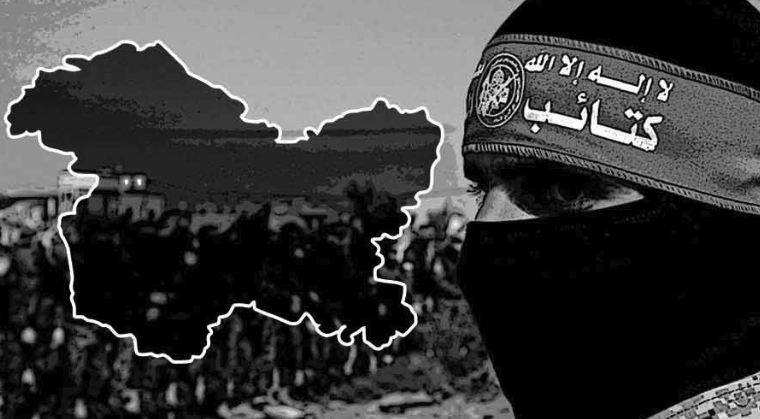Pahalgam Massacre: India Faces Its ‘October 7 Moment’ as Pakistan Stokes Terror Flames
What unfolded in Pahalgam bore all the hallmarks of a Hamas-style assault—meticulously planned, ideologically motivated, and devastatingly executed.
In the bucolic beauty of Pahalgam’s Baisaran Valley, known for its pine-scented air and rising tourist footfalls, peace was shattered on April 22 in a manner chillingly reminiscent of Hamas’s October 7, 2023, attack on Israel. Five terrorists, including three Pakistani nationals, descended from the forests and began executing tourists—one by one—after forcing them to recite Islamic verses.
The carnage left 26 civilians dead, among them women and children, including a tourist from Nepal. The massacre wasn’t just another act of cross-border terrorism; it marked a tactical evolution by Pakistan’s deep state—an eerie mimicry of Hamas’s model of ideological warfare and civilian targeting.
And behind this brutal theatre of violence, observers say, stood Pakistan’s most powerful man: Army Chief General Asim Munir.
“Like Hamas leaders before their October 7 assault on Israel,” noted Ashish Singh, senior journalist with The Sunday Guardian and a veteran of 18 years in defense and strategic affairs, “General Asim Munir deliberately fanned sectarian flames to galvanise extremist factions just days ahead of the Pahalgam terror attack.”
Singh, who has covered conflicts in both Kashmir and Israel, draws a sobering parallel between the two theaters: Munir’s rhetoric was no accident—it was a desperate bid for political survival wrapped in religious militancy.
Sectarian Sparks in Islamabad
Just days before the attack, Gen Munir stood before the Overseas Pakistanis Convention (OPC) in Islamabad and invoked the incendiary “Two-Nation Theory,” branding Kashmir as Pakistan’s “jugular vein.” His words were more than symbolic—they were a call to arms.
“The inflammatory speech,” Singh explains, “was designed to reignite historical animosities. It was classic deflection by a military man cornered by domestic chaos.”
Indeed, Pakistan’s internal state was flammable. The Tehreek-e-Taliban Pakistan (TTP) was staging deadly assaults across Khyber Pakhtunkhwa. Insurgency was flaring in Balochistan. The political vacuum left by the jailing of former Prime Minister Imran Khan had sapped civilian authority.
“Generals are silently conspiring against Munir; he needed Kashmir as a diversion,” a Pakistani analyst noted, speaking on condition of anonymity.
Adding to Munir’s anxieties was the looming extradition of Tahawwur Rana from the U.S.—a co-conspirator in the 26/11 Mumbai attacks. His testimony could implicate senior figures in Pakistan’s military-intelligence establishment. In anticipation, the ISI began mobilizing assets across the Line of Control, amassing nearly 100 terrorists at staging areas aimed at India’s Jammu region.
Pahalgam: Echoes of Gaza
What unfolded in Pahalgam bore all the hallmarks of a Hamas-style assault—meticulously planned, ideologically motivated, and devastatingly executed.
“They asked my father to recite the kalma,” said Asavari Jagdale, daughter of slain tourist Santosh Jagdale. “When he couldn’t, they shot him—three bullets—in front of me. I knew he was gone after the first one.”
The terrorists were equipped with American-made M4 carbines and AK-47s, suggesting logistical sophistication and substantial financial backing. Dozens of spent cartridges were recovered from the site, confirming the operation’s precision and scale.
The attackers belonged to The Resistance Front (TRF), a Lashkar-e-Taiba (LeT) proxy rebranded post-Article 370 to avoid global scrutiny from anti-terror watchdogs like the FATF. Investigations revealed how TRF, much like Hamas, had exploited encrypted platforms for recruitment and coordination.
Just as Hamas had attacked a music festival—symbolic of peace and multiculturalism—TRF chose Pahalgam, Kashmir’s crown jewel of tourism and coexistence. More than 23 million tourists had visited Kashmir in 2024 alone, sparking economic rejuvenation and local hope.
This wasn’t just a massacre—it was psychological warfare.
Ideological Convergence: TRF as Pakistan’s Hamas
Indian intelligence agencies traced even deeper connections. They found that delegates from Hamas were hosted by the Pakistani Army’s Bahawalpur combat simulation center mere weeks before the Pahalgam massacre. These same delegates also visited the headquarters of Jaish-e-Mohammed (JeM), Pakistan’s long-time jihadi asset.
Ashish Singh confirms the strategic intent behind this coordination, “The Pakistani military sees value in Hamas’s playbook—mobilizing public rage, creating civilian martyrs, and reframing terrorism as resistance.”
Michael Rubin, senior analyst at the American Enterprise Institute, echoed this sentiment, stating, “That is exactly what went on when we had the October 7, 2023 Hamas attack on Israel. It was directed specifically against Jews and not only against Jews, but among the most liberal Jews who were most prone to wanting peace and normalcy with the Gaza Strip. Targeting a vacation resort, middle-class Hindus, it is evident that the Pakistanis are trying the same tactic now.”
India’s Swift Response
India’s response was swift, calibrated, and comprehensive. Prime Minister Narendra Modi cut short his Saudi Arabia visit and convened an emergency meeting of the Cabinet Committee on Security (CCS).
Foreign Secretary Vikram Misri later announced key retaliatory actions: Suspension of the 1960 Indus Waters Treaty, Closure of the Attari-Wagah border crossing, Eviction of Pakistani nationals under the SAARC Visa Exemption Scheme within 48 hours, Expulsion of Pakistani military attachés and diplomatic staff cuts.
India’s diplomatic presence in Islamabad was reduced from 55 officials to just 30, mirroring the most strained moments in bilateral history.
The government also launched an aggressive campaign at the UN and other multilateral forums to expose Pakistan’s continued reliance on terrorism as a tool of statecraft.
Caution Meets Clarity
Despite the bloodshed, Indian military planners have advised caution against launching immediate conventional retaliation.
“General Munir wants escalation—it’s his only hope of rallying support within a fractured Pakistan,” said one senior military official. “Our aim must be to increase the costs for Pakistan without giving him the war he craves.”
But India’s restraint has come at a price. In 2023 alone, 125 Pakistani drones were recovered on Indian soil. In April, multiple infiltrators with semi-automatic weapons were captured alive, confirming a broader operational strategy.
Still, Kashmiris, while shaken, refuse to submit to fear. The aim of the attack was clear: to derail tourism, disrupt the local economy, and reignite separatist sentiment. It failed.
Pahalgam: A National Inflection Point
The Pahalgam massacre is more than just another grim chapter in India’s counterterrorism struggle. It may be India’s ‘October 7 moment’—a point where denial is no longer an option, and strategy must evolve.
Like Israel, India now faces a hostile neighbour intent on weaponising religious ideology for geopolitical disruption. Like Israel, India must rethink deterrence.
Enhanced surveillance, tighter border security, and preemptive neutralization of threats will be necessary. But equally important will be sustained diplomatic offensives and global advocacy to delegitimize state-sponsored terrorism.
As Ashish Singh starkly puts it—This is no longer about Kashmir alone. It’s about confronting a regional pattern—where terror is strategy and ideology is ammunition. Pahalgam wasn’t random. It was a message. And India must respond—not with outrage, but with resolve.
“Facing a hostile neighbor determined to weaponize terrorism, India’s strategic posture must now reflect clarity, determination, and the unwavering resolve to ensure Pahalgam marks a turning point—never again a prelude to recurring tragedy”.



